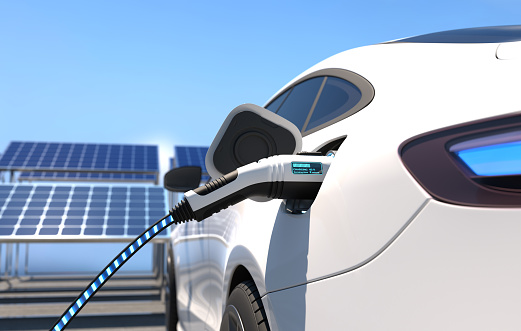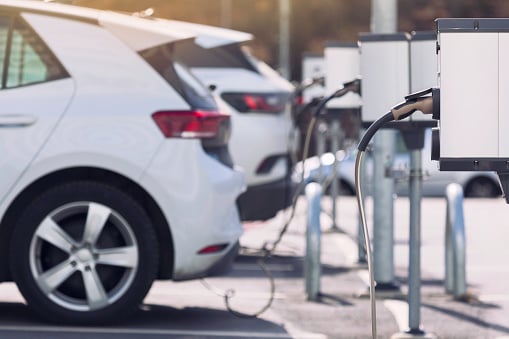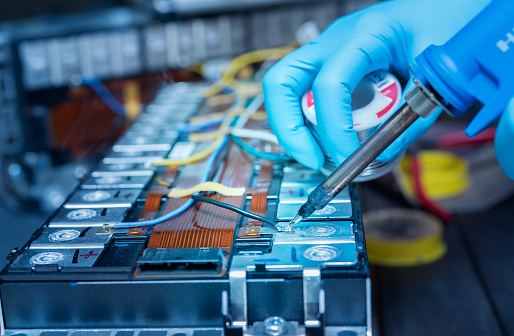BLOGS
Philippine Electric Vehicle Law Ultimate Guide
Public transportation in the Philippines consists of various modes of transportation, including buses, jeepneys, taxis, tricycles, and trains. Among these, the most common vehicle that you will see in the country are jeepneys. It has been a great part of Philippine history and culture. Jeepneys are a unique form of transportation in the Philippines. They are customized vehicles that can accommodate around 12-20 passengers. They operate on fixed routes and can be flagged down anywhere along the route.
However, the most controversial issue in the Philippines these days is the switch to modernization and innovation. The legislation aims to encourage Electric Vehicles (EVs) as a form of transportation that would lessen reliance on fossil fuels as well as to develop and regulate the Philippine electric vehicle industry.
If you are curious to know more about the new law, keep on reading this article.
What is the law on electric cars in the Philippines?
In the Philippines, the law governing electric cars is primarily embodied in the Electric Vehicles and Charging Stations Act, which was signed into law.. The Philippine Electric Vehicle Law aims to promote the use of electric vehicles as a means to reduce the country’s dependence on fossil fuels, lower greenhouse gas emissions, and promote the development of a sustainable transportation system.
Under the law, the government is mandated to develop a Comprehensive Roadmap for the Electric Vehicle Industry (CREVI), which includes the establishment of standards for electric vehicles and charging infrastructure, the formulation of policies and incentives to encourage the use of electric vehicles, and the promotion of research and development for electric vehicle technology.
The law also provides for a range of incentives to encourage the use of electric vehicles, such as tax exemptions, reduced registration fees, and preferential parking spaces. Additionally, the law mandates the establishment of charging stations in strategic locations, such as major highways, commercial areas, and public transportation terminals, to ensure that electric vehicles have sufficient access to charging infrastructure.

What is RA 11697 PH?
On April 15, 2022, Republic Act No. 11697, the Philippine Electric Vehicle Law, which outlines the legal foundation for EV production and industry adoption, was signed into law. The law also charges government organizations with fostering an environment that is both supportive of and competitive for private businesses.
One of the key provisions of the law is the provision of incentives to encourage the use of EVs. These incentives include tax exemptions, reduced registration fees, and preferential parking spaces. The law also mandates the establishment of charging stations in strategic locations, such as major highways, commercial areas, and public transportation terminals, to ensure that EVs have sufficient access to charging infrastructure.
General Provisions of the Philippine Electric Vehicle Law
Here are the important provisions to be noted in the Philippine Electric Vehicle Law:
Designated Spaces for Electric Vehicles
Aside from creating a comprehensive roadmap for the EV industry, recognizing designated places, such as parking spots and charging stations, as essential elements in EV adoption is a part of this plan.
According to the regulation, businesses with 20 or more parking spaces are required to provide charging stations and reserve 5% of their area for EVs. This entails altering current facilities to be EV-ready for commercial property or parking owners. New construction ventures might need to reassess their parking spaces to accommodate electrical vehicles. Residential properties with convenient EV charging stations and maintenance facilities will probably be in demand as EV use rises. Businesses in sectors like food delivery services, logistics for freight, lodging, travel agencies, and electricity and water utilities are required by law to also have 5% of their fleets of cars be electric, whether they are owned or leased.
Suggested Read: 10 Steps To A More Eco-Friendly Lifestyle
Development of Charging Stations
The Department of Energy (DOE) will be the principal organization promoting EV adoption, including the use and upkeep of charging stations, in accordance with RA 11697. In the early stages, the absence of a public charging infrastructure, in addition to the high cost of purchase and maintenance, prevented road users from switching to electric vehicles. The rules for accrediting and registering providers of EV charging stations are currently being finalized by the government because people have already begun using electric vehicles for mobility in Metro Manila cities, indicating the need for additional charging infrastructure upgrades.

Now, EV charging facilities are becoming more widely accessible nationally thanks to initiatives from the public and commercial sectors. Primarily, the Department of Science and Technology (DoST) has created an electric vehicle (EV) charging system for commercial use dubbed CharM or Charging in Minutes. EVs, including e-trikes and e-jeepneys, may now be fully charged in 30 minutes as opposed to the prior 4 to 6 hours. The SM Group’s SM Supermalls are installing charging stations in a few select retail centers across the country, and the DoST is deploying CharM to those locations.
Manufacturing of Electric Vehicles
The expansion of manufacturing infrastructure is one aspect of the growing EV sector. The demand for real estate in industrial communities and areas where EV manufacturing facilities can be established may therefore rise in the Philippine market.
The Secretary of the Department of Trade and Industry (DTI) is envisioning the Philippines as a worldwide manufacturing hub for crucial EV parts and components like auto-electronics, charging stations, and EV batteries rather than only producing e-PUVs (public utility vehicles) domestically. For instance, a planned industrial town in Bataan is expected to house EV manufacturing facilities and develop into a major EV manufacturing hub. A South Korean company is also making investments in the nation to create a P5 billion facility for electric vehicles in Negros Occidental.
As of 2020, the country already has 54 EV producers and importers, 11 component producers, and 18 dealers, according to the Department of Trade and Industry (DTI). It is anticipated that manufacturers and investors will increase in number with the passage of the EV Development Law.
Roles of Local Government Agencies in the Comprehensive Electric Vehicle Industry Development Act
To properly execute the planning of the Philippine Electric Vehicle Law, the following agencies will have specific responsibilities.
Department of Energy
The DOE will be the main organization in charge of encouraging the use of EVs, developing charging infrastructure, and producing equipment. Additionally, they are in charge of establishing streamlined and general rules for the usage, upkeep, and operation of charging stations and associated hardware. They will be in charge of reviewing the requirements and accreditation of charging station service providers in collaboration with other relevant organizations.
Department of Transportation
The DOTr will be the key organization in charge of creating EV demand, regulating and registering EVs, and franchising EVs used for public transportation. They are in charge of mandating green routes to be included in the LTFRB route plans.
Department of Trade and Industry
The DTI will be the main organization in charge of fostering and expanding the domestic EV manufacturing sector. In order to assure product quality and customer protection, they will also adopt the necessary standards to govern the safety and quality of parts and components.
Department of Science and Technology
In collaboration with the DTI and other pertinent organizations, the DOST shall create and update the CREVI’s research and development component on a regular basis. Additionally, they must provide technical and financial assistance for authorized state institutions and colleges to conduct specialized transportation studies at the local government level.

National Economic and Development Authority
The NEDA shall incorporate the CREVI in the Philippine Development Plan to reflect the significance of the Electric Vehicle Industry’s contribution to national development. They will also creating an annual work plan to accelerate the development, commercialization, and utilization of EVs.
Overall, the Philippine Electric Vehicle Law represents a significant step forward in promoting the use of electric vehicles in the Philippines and developing a more sustainable transportation system.
Suggested Read: Philippine Emergency Numbers And Hotlines To Keep In Mind
Suggested Read: Philippine Highway Network: Everything You Need To Know
Suggested Read: Pros And Cons Of Wood, Gas, And Electric Fireplaces
Suggested Read: How To Set Up A Coffee Station At Home
Suggested Read: How Real Estate Taxes Work















